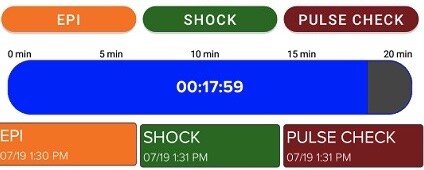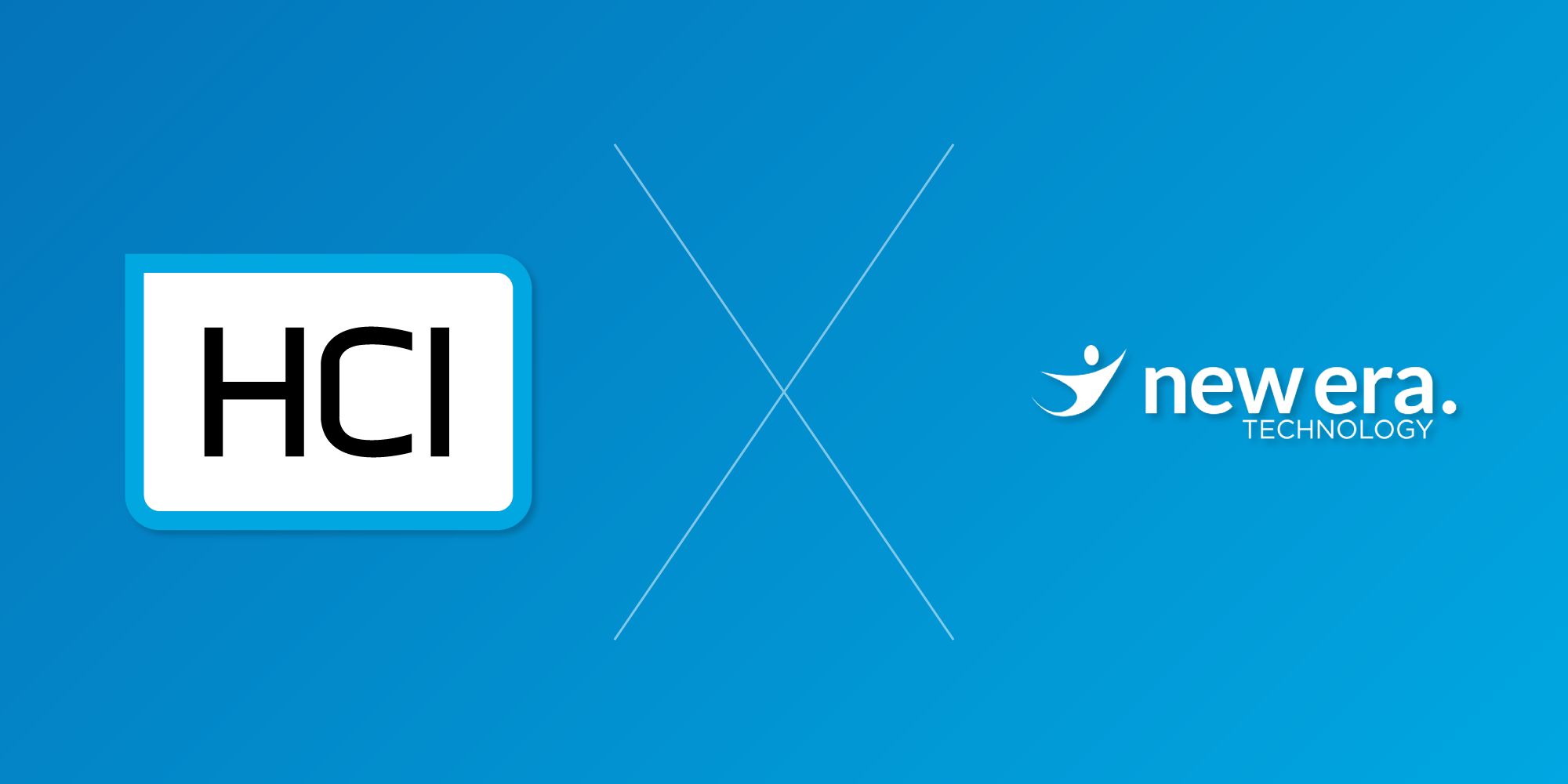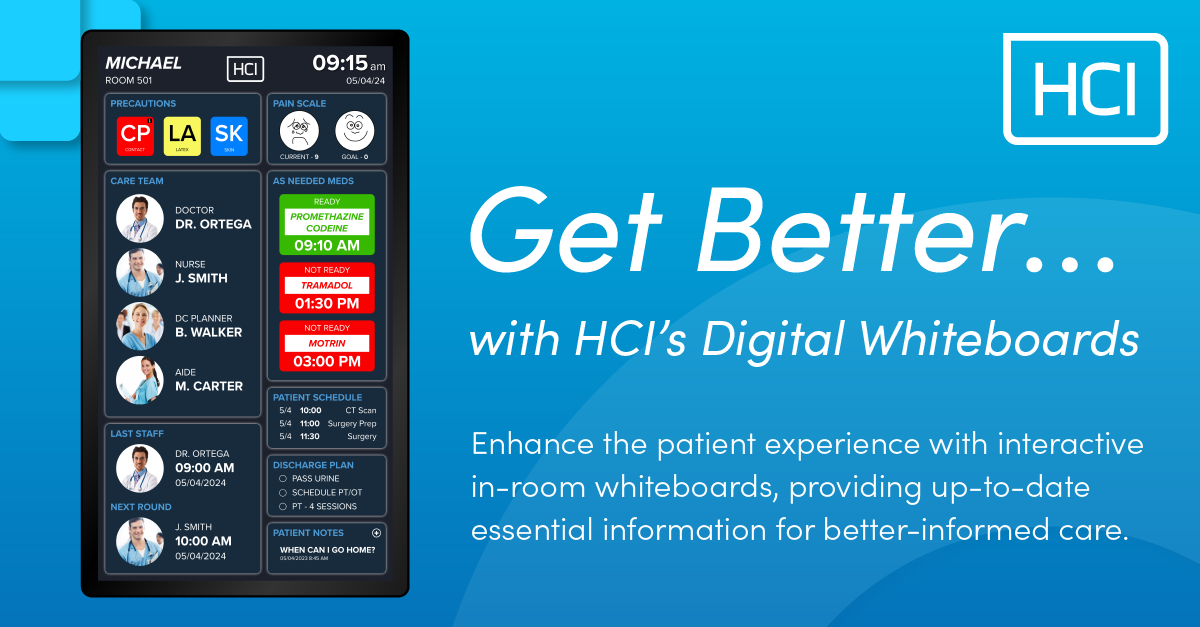Introduction
Let’s be honest—healthcare can feel overwhelming. Between the constant alarms, unfamiliar faces, and whiteboards filled with dry-erase scribbles, it’s easy for patients to feel lost in the shuffle. But what if the whiteboard on the wall could talk to the EMR, update itself in real-time, and speak the patient’s language?
Welcome to the world of digital whiteboards—the unsung heroes of modern healthcare.
What Are Digital Whiteboards?
Digital whiteboards are interactive display panels that replace traditional dry-erase boards in hospital rooms. They connect to hospital systems and present live updates on patient information, care plans, alerts, and more.
How They Differ from Traditional Whiteboards
Unlike a dry-erase board that relies on manual updates (which are often overlooked or outdated), digital whiteboards automate the process and ensure accurate, real-time data is always available.
Core Features of Modern Digital Whiteboards
-
EMR integration
-
Real-time vitals and patient data
-
Alerts and precautions
-
Language translation
-
Video calling and virtual nursing
-
Custom branding and layout
Why Hospitals Are Making the Switch
The Push Toward Smart Room Technology
Hospitals are shifting toward a “smart room” model where everything from the bed to the lighting system works together. Digital whiteboards are the nerve center for this ecosystem.
The Need for Real-Time Communication
Information delays can lead to miscommunication and even medical errors. Digital whiteboards close the communication loop—instantly.
Top Benefits of Digital Whiteboards
1. Enhanced Patient Communication
When patients understand what’s happening, they feel safer. Digital whiteboards bring transparency to the bedside.
Personalized Patient Data at a Glance
Imagine being admitted to a hospital and seeing your name, care team, dietary restrictions, and discharge goals clearly displayed—all auto-synced with the EMR.
Language Translation and Accessibility Features
With built-in language translation, non-English-speaking patients can access their information without barriers. This promotes health equity and builds trust.
2. Improved Care Team Coordination
Nurses, physicians, therapists—everyone needs to be on the same page. Digital whiteboards help align the team.
Real-Time EMR Integration
Digital whiteboards pull live data from the EMR, meaning no more dry-erase lag time. Everyone sees the most up-to-date information.
Automated Status Updates
From “awaiting discharge” to “radiology in progress,” automated indicators keep the whole care team in sync without needing to ask around.
3. Increased Staff Efficiency
Time is a scarce resource in healthcare. Digital whiteboards save time and let staff focus on care—not clerical work.
Less Time Writing, More Time Caring
Nurses spend less time walking around with markers, and more time with patients.
Reduced Errors from Manual Updates
Say goodbye to missed allergy warnings or out-of-date discharge times. Automation equals accuracy.
4. Better Patient Safety
Digital whiteboards are like guardians of the room, keeping safety front and center.
Highlighting Precautions and Alerts
Whether it’s “fall risk,” “isolation,” or “NPO after midnight,” these alerts are visually prominent and always accurate.
Bedside Fall Risk Indicators
By syncing with smart beds and the EMR, digital whiteboards proactively warn staff when patients are at high risk for falls.
5. Improved Patient Satisfaction Scores
Let’s face it—confused patients are unhappy patients. Digital whiteboards offer clarity and control, boosting HCAHPS scores.
Clarity Brings Comfort
When patients and families can see who their nurse is, what medications they’re getting, and when they’re going home, they feel informed and in control.
Family Engagement and Education
Digital whiteboards can display videos, care plans, and even discharge education. Families get to participate—not just observe.
Integrations That Make Digital Whiteboards Powerful
EMR, Nurse Call, and Smart Bed Syncing
These aren’t just displays—they’re communication hubs. HCI’s digital whiteboards integrate bidirectionally with:
-
EPIC, Cerner, Meditech
-
Nurse Call Systems like Rauland, Jeron, TekTone
-
Smart Beds (Hillrom, Stryker) for fall risk alerts
Virtual Nursing and Telehealth Capabilities
Patients can press a button and instantly connect with virtual nurses, interpreters, or specialty providers—right on the screen.
Cost Savings and ROI
Elimination of Dry-Erase Boards
No more replacing boards every few years or buying markers in bulk. Plus, no infection risk from shared markers.
Reduced Readmissions and Hospital Stays
Better communication = fewer errors, better outcomes. That translates to real cost savings in avoidable readmissions and longer stays.
Overcoming Implementation Challenges
Staff Training and Buy-In
Yes, change can be hard. But with the right rollout plan, training tools, and clinical champions, adoption becomes seamless.
Infrastructure Considerations
Power, data, and mounting—these must be planned carefully. But modern solutions are hardware-agnostic and scalable, making the transition smoother than ever.
The Future of In-Room Patient Communication
AI, Voice, and Predictive Analytics
Imagine a digital whiteboard that predicts patient needs or listens for a patient’s voice to trigger a nurse call. That’s where we’re heading.
Customizable UI and Department Workflows
From pediatrics to oncology to the ICU, every unit has unique needs. HCI’s platform allows full customization for color, layout, workflow, and alerts.
FAQs
1. How much do digital whiteboards cost to implement?
Costs vary depending on the size of the facility and the level of integration. HCI offers solutions starting under $1,000 per room with scalable options and no mandatory hardware lock-in.
2. Can digital whiteboards be customized for different departments?
Absolutely. Whether you’re in pediatrics, emergency, or oncology, each unit can have its own customized layout, alerts, and workflow design.
3. Do digital whiteboards work without EMR integration?
Yes, but integration unlocks the full potential. Even standalone, they can display announcements, schedules, and virtual nursing tools.
4. Are digital whiteboards hard for older patients to understand?
Not at all. Most displays are passive and designed for clarity—patients don’t need to interact with them. And accessibility features support large fonts, multiple languages, and visual alerts.
5. What makes HCI’s digital whiteboards different from competitors?
HCI offers a fully open platform, unlimited scalability, and deep integrations with EMR, nurse call, RTLS, smart beds, and virtual care—all for a fraction of the cost of most big-name systems.
Conclusion
Digital whiteboards aren’t just gadgets—they’re a transformational shift in how hospitals communicate. They streamline care, keep patients informed, and give staff the tools to do their jobs more effectively.
If you’re still clinging to dry-erase markers in your patient rooms, it might be time to rethink what “modern healthcare” really means.
Next Steps with HCI
If you’re ready to see how digital whiteboards can transform your hospital, HCI can help. Our hardware-agnostic, fully integrated solutions connect seamlessly with your EMR, nurse call, and smart bed systems—without locking you into expensive proprietary hardware. We’ll work with you to customize layouts, integrate existing workflows, and deliver measurable results.
Contact us today to schedule a personalized demo and start building the patient room of the future.
Share this
You May Also Like

Code Blue Response: When Time is of the Essence




